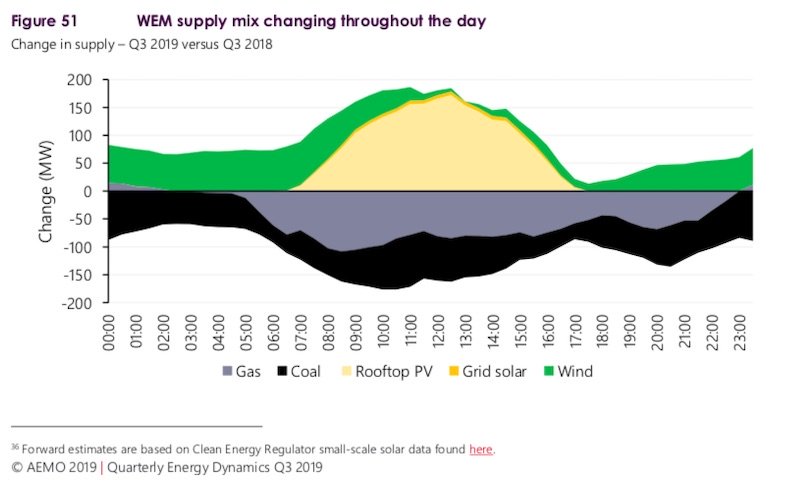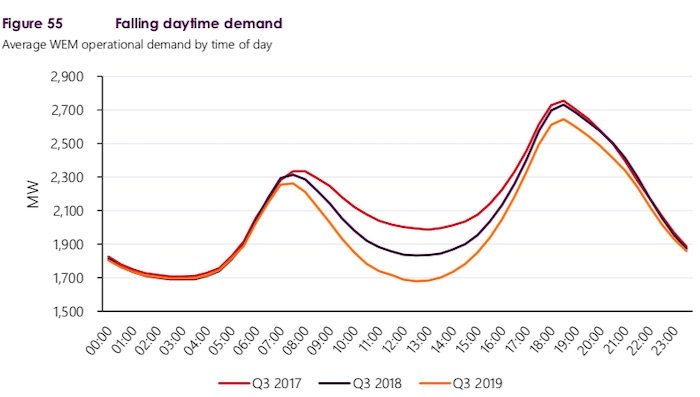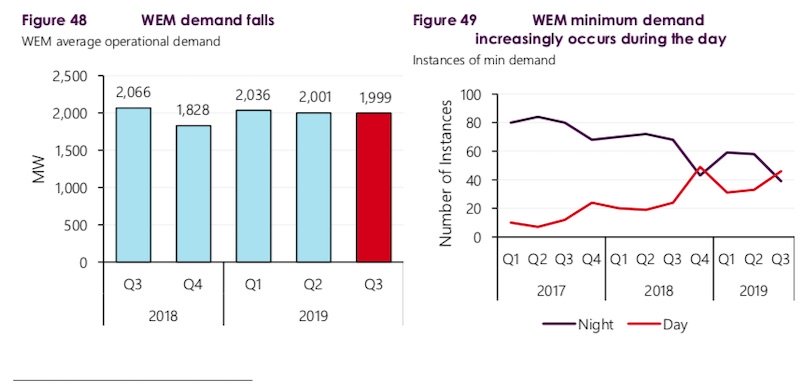According to the Australian Energy Market Operator’s latest Quarterly Energy Dynamics report, new Q3 low in demand was recorded at 11.30am on Sunday September 29 – at a time when output from rooftop PV was approximately 971MW and fulfilling an astonishing 45 per cent of underlying system demand.
This, in turn, has contributed to an increase in negative pricing events in W.A., as it has in South Australia and Queensland.
AEMO says negative prices were recorded in 5% of intervals, mostly in the middle of the day due to low operational demand and rooftop PV, but also in the early morning with low demand and strong wind output. Unusually, negative prices were also experienced in the state’s “balancing” market.

The output of distributed solar generation over the quarter was boosted by mild and sunny weather, AEMO said, coupled with increased penetration of rooftop PV – 22 per cent increase on W.A.’s South West Intercnnected System (SWIS) alone, according to state-owned gen-tailer Synergy.
And a 2MW decrease in overall WEM demand compared to the previous quarter meant that for the first time in the W.A. market’s history, average operational demand was lower in Q3 than in Q2.

“Increasing rooftop PV is continuing to shift minimum demand from the early morning to middle of the day,” the AEMO report said.
“For the first time in Q4 2018, and again in Q3 2019, there were more instances where minimum demand occurred during the day rather than overnight (Figure 49).”

Coal power, meanwhile, fell by 62MW (7%) on average and gas power generation by 51MW (5%) on average – mainly during the middle of the day when they were displaced by solar generation, AEMO said.
The report notes that the state’s coal units are now being run in “a more cyclical fashion.” with the baseload Collie Power Station cycled off more often.
“The facility was cycled off seven times in Q3 2019, compared to only twice in Q3 2018 (Figure 52). Only two instances this quarter were due to outages. The remaining five occurred when the facility was available but not required due to low demand over weekend periods.”
The record for W.A. follows the third of its kind in one month for South Australia, with AEMO reporting a new minimum operational demand of 458MW at 13:30pm on Sunday November 10, replacing the previous summer minimum record set in December 2018.